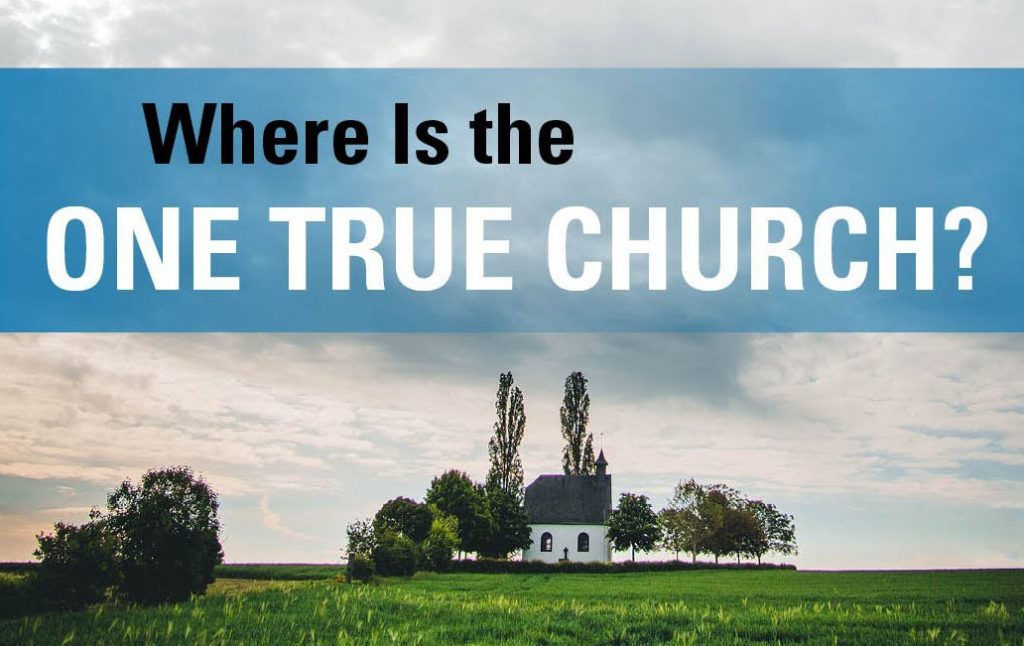“it is high time to think about, as Kung calls it, is …the real church.”
…no matter how many old movies you have in your DVD collection or how often you watch them, you can’t go back to the time and cultural context that forged them. Any attempt in the present to make something like Casablanca or The Manchurian Candidate or [insert your favorite here] will essentially fall short. It will be a reproduction that apes the signature characteristics — dress, décor, modes of speech, vehicles, and so on — of another time. Similary, a Civil War re-enactor’s club may help keep the memory of that history alive, but it doesn’t make that history present. At the end of the day, the actors put away their muzzle loaders, change back into their normal clothes and drive home to their modern dwellings with electricity, indoor plumbing, and internet.
Steve Skojec
Being convinced that that no “one true church” exists today is not to imply that the Church does not exist. In my understanding, scripture unequivocally confirms, not only that that the Church exists — it is real.
Rather than talking about an ideal church situated in the abstract celestial spheres of theological theory, we [should] consider the real Church as it exists in our world and in human history. The New Testament itself does not begin by laying down a doctrine of the Church which has then to be worked out in practice; it starts with the Church as reality, and reflection upon it comes later. The real church is first and foremost a happening, a fact, an historical event.
Hans Kung – THE CHURCH
In the midst of writing this post, I was “called” to mow my yard. As is my custom, I use the time mowing to listen to various podcasts. My choice, one of my regulars, was Josh Graves at Otter Creek Church. His sermon was “Deep Church”, one in a series entitled “Church, Why Bother?”
My intention for this post was to pursue Hans Kung’s thoughts on the real church. However, Josh’s sermon and an unexpected conversation with a Nepalese seminarian diverted me. I will return to Kung later.
Pondering the idea of “real church”, I wonder how my pursuit of “real church” is different than a quest for” the one true church” or “restoring the NewTestament Church” ? This is an important question, if there is no difference, any conclusion I reach about “real church” will be nothing more than another idealistic, abstract notion.
I believe the difference lies in discovery verses explanation. I was reminded of this distinction as I “discovered” an excerpt from Larry Crabb I cited many years ago. Worthy of another post, it is entitled “Fire Lighters” you can read it HERE.
Isa 50:10-11
Who among you fears the LORD and obeys the word of his servant?
Let him who walks in the dark, who has no light, trust in the name of the LORD
and rely on his God.
But now, all you who light fires and provide yourselves with flaming torches, go, walk in the light of your fires and of the torches you have set ablaze.
This is what you shall receive from my hand: You will lie down in torment.
I am resolved that my pursuit of “real church” will be one of discovery and I will resist my compelling need to explain. As Crabb concludes: “The passion to explain leads us along a path that ends badly.”
Resisting the need to explain is essential, not only in the pursuit of “real church”, but , also in growing faith in God. There are a couple of metaphors I’ve written about before, that can be helpful in avoiding a path of explanation.

Mirage,
“…an illusion of something that is real“. All images of church today are a mirage, illusions of what is real. They are not false , but they are not real.My task is not to explain why or why not they are false, but to discover what is real.

Jigsaw Puzzle
If all existing truth [about church] were represented by a jigsaw puzzle, what we know would only be a few pieces from the puzzle. This means that what we know can only be known in varying degrees of probability, since after all, we only have a small portion of the entire puzzle—we are always drawing conclusions based off of partial information. (Zachary Broom)
My task is to continuously discover the entire puzzle.

Because we are redeemed and flawed people of God … ecclesia…body of Christ we must be humbled by the truth that we are the church now — but not yet. My responsibility is to know I reside on a continuum between an idealized church and the real church. My mission is to discover and surrender to the will of God for His gathered people, in that pilgrimage the real church will come forth. Perhaps that is why Kung declared, in part, …” the inner nature [of the church] can only be seen by believing Christians”.
Walking in the light of our own fires and torches will only bring torment.
Discovery is not an event, it is an adventure.
Still on the journey.
